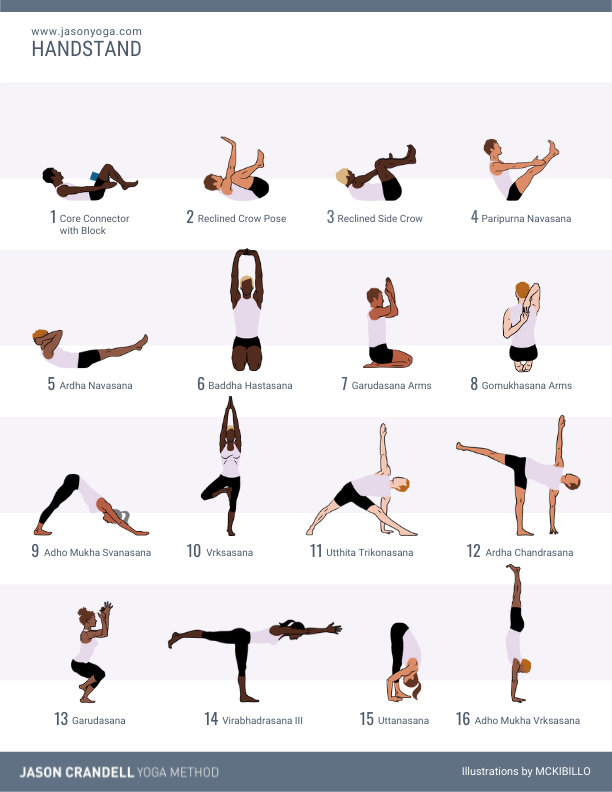I do know I’m not alone in my love for Handstand. It’s empowering, strengthening, and enjoyable. Whether or not you’re working on the wall, in a studio, or attempting to do the pose on a paddleboard, the next sequence will show you how to construct a powerful, secure Handstand.
Right here’s a take a look at my thought course of when placing collectively the Handstand prep yoga sequence.
I like to incorporate 4 preparatory phases when educate Handstand:
1. Join college students to the core
2. Connect with the arms
3. Open the shoulders
4. Set the tone for balancing with standing balances.
Encouraging a connection to deep, rhythmic breath is a given—particularly in sequences that embrace difficult postures.
I hope this follow helps you are feeling extra calm, assured, and powerful in Handstand! Please let me know the way it goes within the Feedback under.
Poses 1-5: Core Connection The primary 5 postures on this sequence will awaken your entire belly muscular tissues, pelvic flooring, and hip-flexors in preparation for the Handstand that’s down the highway.
Your core performs two major roles in Handstand. First, your core helps you progress the load of your pelvis as you soar or press into Handstand. Second, your core helps hold your pelvis stacked instantly above your ribcage.
Poses 6-8: Shoulder Opening One of many hidden obstacles in Handstand is tight shoulders. In case your shoulders are tight (particularly, ball and socket flexion and scapular lateral rotation), it would tough to determine a vertical plum line. In case your physique will not be effectively aligned from high to backside, your entire muscular tissues should work even more durable to take care of the pose. By practising these shoulder openers, you’ll launch restrictions and put together your shoulders for the calls for of Handstand.
Pose 9: Connecting to Your Palms Your arms are the one most vital part of balancing in Handstand. It’s important to be taught to be aware of and responsive along with your arms within the pose. Down Canine is included on this sequence to offer you the chance to focus in your arms and fingers. By rooting down evenly by way of your fingertips and the circumference of your palms, you’ll imprint the work you will want to do along with your arms in Handstand.
Poses 10-14: Establishing Stability Balancing in Handstand is difficult until you educated as a gymnast or cheerleader once you had been a child. Positive, it’s doable, nevertheless it’s nonetheless onerous. These standing balances will get you in balancing mode. Enable your physique to sway barely and give attention to respiratory as an alternative of changing into tense and inflexible. Discover all the exercise in your toes, toes, and decrease legs. These components of your physique in standing balances are equal to your arms, fingers, and forearms in Handstand. They’ve to remain energetic and responsive that can assist you keep stability. I’ve included Triangle Pose in between the opposite standing balances to offer you a powerful and secure counterpoint.
Poses 15: Flip Upside Down Uttanasana offers a chilled, grounding posture earlier than you transition into Handstand.
Pose 16: Peak Pose: Handstand (Adho Mukha Vrksasana) For a lot of college students, entering into Handstand is tougher than balancing within the pose. If entering into Handstand stays elusive, be affected person and per this sequence. It’s finest to work on the pose within the presence of a certified teacher till you are feeling assured entering into the pose by yourself.
Within the meantime, this sequence will strengthen and open your physique and show you how to make progress. For these of you who can get into Handstand, follow the posture on the wall and give attention to holding the pose for longer increments of time—-ideally constructing as much as one minute within the pose earlier than engaged on balancing in the midst of the room.
Good luck!
{illustrations by MCKIBILLO}

